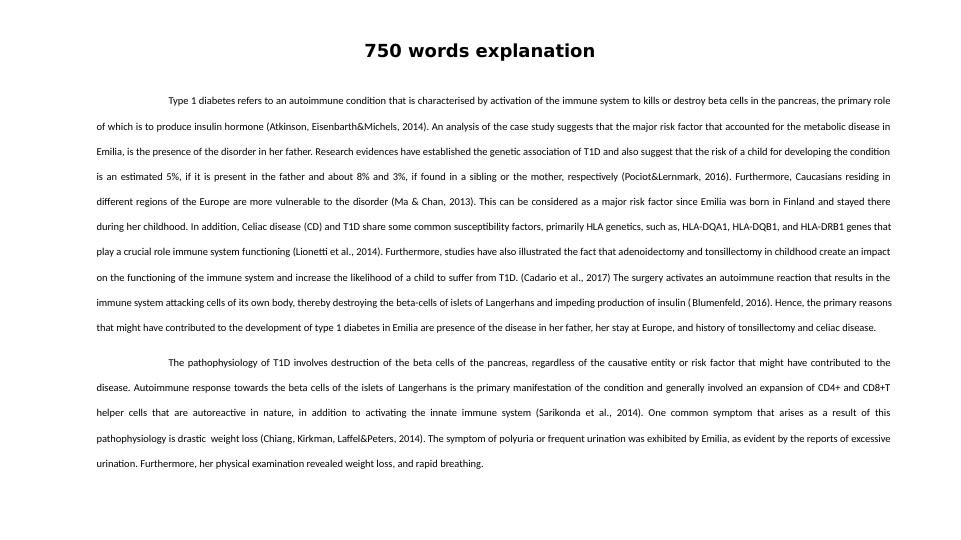Type 1 Diabetes: Risk Factors, Aetiology, Pathophysiology, Clinical Manifestations, Diagnostic Tests, and Treatment
Added on 2023-06-10
4 Pages1883 Words409 Views
End of preview
Want to access all the pages? Upload your documents or become a member.
Underlying Pathophysiology of Type 1 Juvenile Diabetes
|5
|946
|496
Pamphlet for Type 1 Diabetes | Assignment
|5
|761
|13
NURS 5084 - Nursing - Essay On Diabetes
|4
|844
|38
Effect of Type 1 Diabetes on Endocrine, Cardiovascular, and Metabolic Systems
|9
|2838
|311
Diabetes: Anatomy, Physiology, Causes, Symptoms and Management
|9
|1720
|317
Type 1 Diabetes Management
|11
|3493
|37

